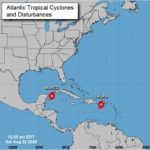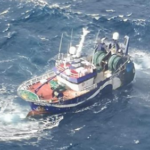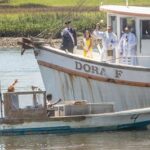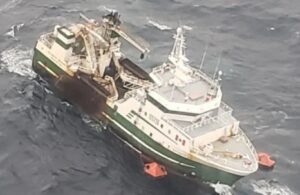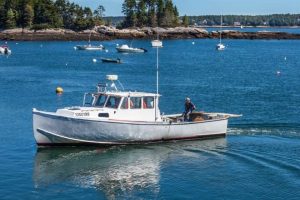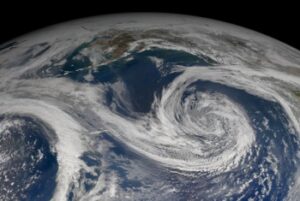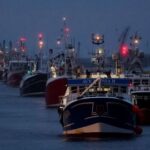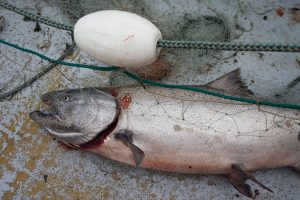Tag Archives: Prince William Sound
Gov. Dunleavy requests five new fishery disasters including Kodiak’s 2024 pink salmon season
 On Jan. 30 Governor Mike Dunleavy submitted five new requests for federal fisheries disaster assistance for last summer’s salmon season. That includes commercial salmon fisheries on the Alaska Peninsula, Kodiak, Chignik, Lower Cook Inlet and Prince William Sound. The state accounts for roughly half, 26 out of 53, of the fishery disasters declared around the country since 2020, which include a variety of species like salmon, crab and Pacific cod. In Kodiak, fishermen harvested 7.6 million pinks last summer, which was less than 40% percent of the ten-year average of 20.4 million fish. That meant last summer was one of the lowest valued commercial pink salmon seasons on record for Kodiak Island. more, >>CLICK TO READ<< 07:57
On Jan. 30 Governor Mike Dunleavy submitted five new requests for federal fisheries disaster assistance for last summer’s salmon season. That includes commercial salmon fisheries on the Alaska Peninsula, Kodiak, Chignik, Lower Cook Inlet and Prince William Sound. The state accounts for roughly half, 26 out of 53, of the fishery disasters declared around the country since 2020, which include a variety of species like salmon, crab and Pacific cod. In Kodiak, fishermen harvested 7.6 million pinks last summer, which was less than 40% percent of the ten-year average of 20.4 million fish. That meant last summer was one of the lowest valued commercial pink salmon seasons on record for Kodiak Island. more, >>CLICK TO READ<< 07:57
Trawlers applaud rejection of efforts to ban PWS trawling
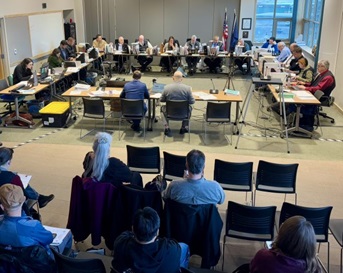 Members of the Alaska Pollock Fishery Alliance are applauding an Alaska Board of Fisheries decision made in Cordova in opposition to a proposed ban on trawling in Prince William Sound. In a statement issued on Dec. 16 from Cordova, the Alliance cited the board’s decision as a “collaborative victory for science-based fisheries management, sustainable fishing practices, and Alaska’s coastal communities.” “It was also a profound moment of solidarity for sustainable fisheries among stakeholders who sometimes compete for resources in these challenging economic times,” the Alliance said. more, >>CLICK TO READ<< 09:37
Members of the Alaska Pollock Fishery Alliance are applauding an Alaska Board of Fisheries decision made in Cordova in opposition to a proposed ban on trawling in Prince William Sound. In a statement issued on Dec. 16 from Cordova, the Alliance cited the board’s decision as a “collaborative victory for science-based fisheries management, sustainable fishing practices, and Alaska’s coastal communities.” “It was also a profound moment of solidarity for sustainable fisheries among stakeholders who sometimes compete for resources in these challenging economic times,” the Alliance said. more, >>CLICK TO READ<< 09:37
Big fight looms at Board of Fish meeting over Prince William Sound trawl bycatch
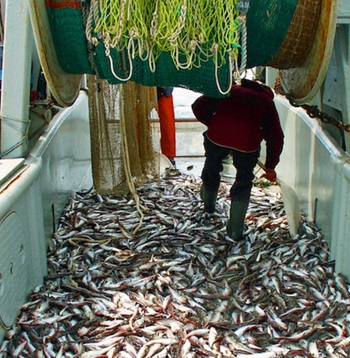 For years, conservationists, tribes and fishermen have feuded over bycatch of salmon in the huge pollock harvest in the remote Bering Sea off Alaska. Now, a new bycatch fight has erupted over a much smaller pollock fishery not far from urban Alaska, in the waters of Prince William Sound, east of Anchorage. This week, the state Board of Fisheries is considering four proposals by a local tribal government and an Alaska sportsmen’s group that could place sharp restrictions on, or even close down, Prince Williams Sound’s annual pollock trawl harvest. Supporters of the proposals cite state data that show the roughly 15 participating boats, most of which come from Kodiak Island, unintentionally scoop up some 900 king salmon and 900 rockfish each year in their wide-mouth trawl nets. And they say that subsistence harvests of those fish need protection. more, >>CLICK TO READ<< 12:07
For years, conservationists, tribes and fishermen have feuded over bycatch of salmon in the huge pollock harvest in the remote Bering Sea off Alaska. Now, a new bycatch fight has erupted over a much smaller pollock fishery not far from urban Alaska, in the waters of Prince William Sound, east of Anchorage. This week, the state Board of Fisheries is considering four proposals by a local tribal government and an Alaska sportsmen’s group that could place sharp restrictions on, or even close down, Prince Williams Sound’s annual pollock trawl harvest. Supporters of the proposals cite state data that show the roughly 15 participating boats, most of which come from Kodiak Island, unintentionally scoop up some 900 king salmon and 900 rockfish each year in their wide-mouth trawl nets. And they say that subsistence harvests of those fish need protection. more, >>CLICK TO READ<< 12:07
After tough salmon season, Lower Cook Inlet fishermen say it will be a struggle to stay afloat
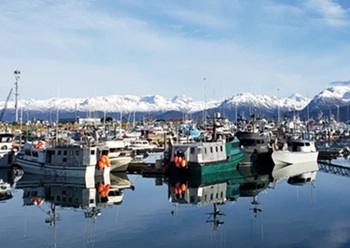 Alaska’s salmon season is largely over. However, commercial fishermen on the southern Kenai Peninsula are reflecting on a year marked by declining catches and higher costs. That includes first-year tender captain Theodore “Teddy” Handley, who took on the role of running his own vessel, the Julia Starr, this season. As a tender captain, he collects fish from fishing boats and delivers them to processing plants. Handley said the sheer pink salmon volume typically boosts the late-season harvest “Even though you’re paid maybe a sixth of what you get for sockeyes per pound, just the volume more that shows up in a pink run is how a lot of the fishermen make their money, and that’s how a lot of the canneries make their money too,” Handley said. Homer’s fishing community comprises generations of families who harvest salmon, halibut and other species from the waters of Lower Cook Inlet. The city is also made up of people and businesses that rely on the commercial fishing industry for income. more, >>CLICK TO READ<< 17:40
Alaska’s salmon season is largely over. However, commercial fishermen on the southern Kenai Peninsula are reflecting on a year marked by declining catches and higher costs. That includes first-year tender captain Theodore “Teddy” Handley, who took on the role of running his own vessel, the Julia Starr, this season. As a tender captain, he collects fish from fishing boats and delivers them to processing plants. Handley said the sheer pink salmon volume typically boosts the late-season harvest “Even though you’re paid maybe a sixth of what you get for sockeyes per pound, just the volume more that shows up in a pink run is how a lot of the fishermen make their money, and that’s how a lot of the canneries make their money too,” Handley said. Homer’s fishing community comprises generations of families who harvest salmon, halibut and other species from the waters of Lower Cook Inlet. The city is also made up of people and businesses that rely on the commercial fishing industry for income. more, >>CLICK TO READ<< 17:40

PWS, Cook Inlet sockeye catch exceeded harvest projections
As the sockeye salmon harvest season comes to a close, only Bristol Bay, Prince William Sound and Cook Inlet surpassed their pre-season predictions, with harvests of 31.1 million, 3.1 million and 2 million reds respectively. Cook Inlet and Prince William Sound were also the only two regions to show year-over-year growth and exceeding harvest projections, says Simon Marks, a research analyst for McKinley Research Group in Juneau, who writes the weekly in-season commercial wild Alaska salmon report on behalf of the Alaska Seafood Marketing Institute. While Bristol Bay has already surpassed the pre-season sockeye prediction by 19%, year-to-date harvest remains 23% behind 2023, Marks said on Aug. 27. Initial predictions for the 2025 season indicate an expected harvest of 32.4 million fish, a 2.8% gain if realized. more, >>CLICK TO READ<< 16:26
Overall impact of disastrous pink salmon fishery still being calculated
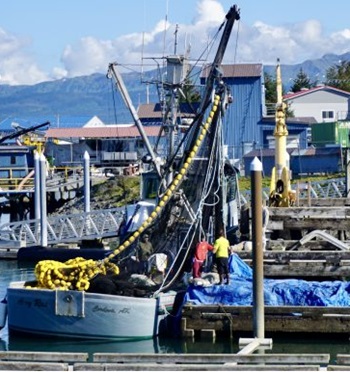 Fallout from what’s being described by commercial fishermen as a pink salmon disaster in Prince William Sound is still being calculated, but troubling times began earlier this year when high insurance costs kept some from ever going out in their boats. Low runs of humpies, mounting fuel costs and some processors opening up late all appear to be spelling big economic challenges for the Prince William Sound economy. “It’s going to be a big hit for the town,” said Cordova City Council Member Kristen Carpenter, who is anticipating a significant loss of raw fish tax dollars to the city this year. “It was an absolute disaster,” said veteran salmon harvester John Renner, chair of the Alaska Department of Fish and Game’s Copper River/Prince William Sound Advisory Committee. One young man lost his boat, said Renner. “Anyone who has payments to make is in trouble unless they have dual permits and are making money off of gillnetting or longlining,” he said. “Fuel is $5 a gallon and insurance costs are up 25%.” more, >>CLICK TO READ<< 13:55
Fallout from what’s being described by commercial fishermen as a pink salmon disaster in Prince William Sound is still being calculated, but troubling times began earlier this year when high insurance costs kept some from ever going out in their boats. Low runs of humpies, mounting fuel costs and some processors opening up late all appear to be spelling big economic challenges for the Prince William Sound economy. “It’s going to be a big hit for the town,” said Cordova City Council Member Kristen Carpenter, who is anticipating a significant loss of raw fish tax dollars to the city this year. “It was an absolute disaster,” said veteran salmon harvester John Renner, chair of the Alaska Department of Fish and Game’s Copper River/Prince William Sound Advisory Committee. One young man lost his boat, said Renner. “Anyone who has payments to make is in trouble unless they have dual permits and are making money off of gillnetting or longlining,” he said. “Fuel is $5 a gallon and insurance costs are up 25%.” more, >>CLICK TO READ<< 13:55
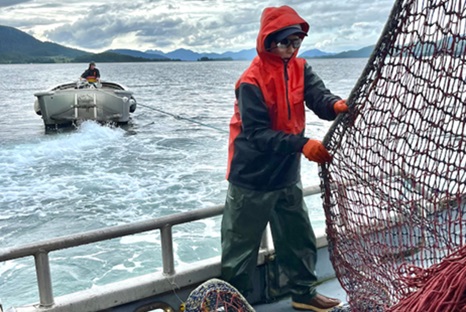
‘Huge disaster’: Historically weak pink salmon runs strain Alaska’s seine fishermen
Expectations were low this year for the pink salmon runs that power Prince William Sound’s commercial fishing industry. But no one expected them to be as bad as they’ve been. With just a few weeks left in the season, the sound’s seine fleet has harvested just one-fourth the number of pinks that it would have caught by now in a typical year. The small runs have forced  managers to close fishing for longer periods than usual. And even during openers, fishermen are reporting abysmal harvests. Some have quit early. Others are thinking about new jobs.” It is incredibly slow,” said Megan Corazza, a Homer-based seine fisherman who has fished in the sound for more than two decades. “It is the worst year I have ever seen with my own operation.” It’s a big blow to an industry already reeling from a global market crisis that sent dock prices plummeting last year. Photos, more, >>CLICK TO READ<< 09:31
managers to close fishing for longer periods than usual. And even during openers, fishermen are reporting abysmal harvests. Some have quit early. Others are thinking about new jobs.” It is incredibly slow,” said Megan Corazza, a Homer-based seine fisherman who has fished in the sound for more than two decades. “It is the worst year I have ever seen with my own operation.” It’s a big blow to an industry already reeling from a global market crisis that sent dock prices plummeting last year. Photos, more, >>CLICK TO READ<< 09:31
Copper River harvest edges slowly towards1.4M
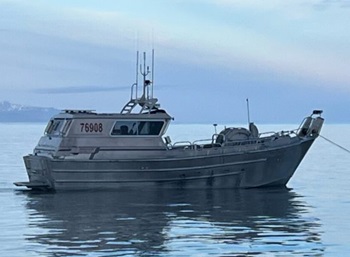 Harvests of Copper River District salmon edged up slightly to 1.4 million fish as of Tuesday, July 23, while for Prince William Sound overall the catch delivered to processors came to over 7 million fish, as the fishery slowed. Alaska Department of Fish and Game biologist Jeremy Botz in Cordova noted that fishing for coho salmon will pick up in mid-August. Meanwhile, Botz said, the sockeye harvest came in above forecast while the chum and likely Chinook catch would be below forecast. Consumers still hoping to purchase those prized Copper River reds likely won’t find them at their local seafood shops, but via the internet in a wide range of prices, some of which have not declined since the summer salmon season began. more, >>CLICK TO READ<< 11:40
Harvests of Copper River District salmon edged up slightly to 1.4 million fish as of Tuesday, July 23, while for Prince William Sound overall the catch delivered to processors came to over 7 million fish, as the fishery slowed. Alaska Department of Fish and Game biologist Jeremy Botz in Cordova noted that fishing for coho salmon will pick up in mid-August. Meanwhile, Botz said, the sockeye harvest came in above forecast while the chum and likely Chinook catch would be below forecast. Consumers still hoping to purchase those prized Copper River reds likely won’t find them at their local seafood shops, but via the internet in a wide range of prices, some of which have not declined since the summer salmon season began. more, >>CLICK TO READ<< 11:40
Copper River/PWS catch exceeds 1M salmon
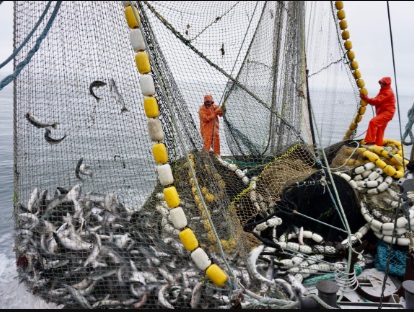 Commercial salmon harvests for the Copper River and the rest of Prince William Sound have now exceeded one million fish, including an estimated 959,946 sockeyes, in a season where retail prices continue to vary from $37.95 to $12.99 a pound. As more commercial fisheries opened statewide, Copper River, Bering River and Coghill district harvesters embarked June 24 on 36-hour commercial drift gillnet openers, and the Eshamy district began a 24-hour fishery. Commercial harvesters in the Unakwik, Montague and Southwestern districts were also fishing. As of late Monday, June 24, the salmon harvest in Prince William Sound stood at 973,000 sockeyes, 549,000 chum, 6,000 Chinook, and 1,000 pinks. Cook Inlet anglers had 42,000 sockeyes, and Bristol Bay districts — which are just getting started — had delivered 228,000 reds, bringing the Central Region total to 1.8 million fish, including 1.2 million sockeyes, 549,000 chum, 6,000 Chinooks, and 1,000 humpies. more, >>CLICK TO READ<< 19:12
Commercial salmon harvests for the Copper River and the rest of Prince William Sound have now exceeded one million fish, including an estimated 959,946 sockeyes, in a season where retail prices continue to vary from $37.95 to $12.99 a pound. As more commercial fisheries opened statewide, Copper River, Bering River and Coghill district harvesters embarked June 24 on 36-hour commercial drift gillnet openers, and the Eshamy district began a 24-hour fishery. Commercial harvesters in the Unakwik, Montague and Southwestern districts were also fishing. As of late Monday, June 24, the salmon harvest in Prince William Sound stood at 973,000 sockeyes, 549,000 chum, 6,000 Chinook, and 1,000 pinks. Cook Inlet anglers had 42,000 sockeyes, and Bristol Bay districts — which are just getting started — had delivered 228,000 reds, bringing the Central Region total to 1.8 million fish, including 1.2 million sockeyes, 549,000 chum, 6,000 Chinooks, and 1,000 humpies. more, >>CLICK TO READ<< 19:12
Copper River continues lead in PWS commercial salmon harvests
 With ice essentially gone from river systems, the sockeyes continued to weigh in heavier than through the same period a year ago, said fisheries biologist Jeremy Botz, in the Cordova office of the Alaska Department of Fish and Game. The Bering River and Coghill districts were also open for 36-hour commercial runs on Monday, and the Eshamy district for a 24-hour period. Montague District opened for purse seiners for 24 hours, and the Southwestern district for 48 hours, also for seiners. Even with other wild Alaska salmon fisheries opening for the season, Copper River sockeyes were holding their own in Anchorage restaurants, with entrees of Copper River reds offered at $49 at Simon and Seafort’s and $32 for the entree at Orso. more, >>CLICK TO READ<< 06:50
With ice essentially gone from river systems, the sockeyes continued to weigh in heavier than through the same period a year ago, said fisheries biologist Jeremy Botz, in the Cordova office of the Alaska Department of Fish and Game. The Bering River and Coghill districts were also open for 36-hour commercial runs on Monday, and the Eshamy district for a 24-hour period. Montague District opened for purse seiners for 24 hours, and the Southwestern district for 48 hours, also for seiners. Even with other wild Alaska salmon fisheries opening for the season, Copper River sockeyes were holding their own in Anchorage restaurants, with entrees of Copper River reds offered at $49 at Simon and Seafort’s and $32 for the entree at Orso. more, >>CLICK TO READ<< 06:50

PWS Seine fleet reacts to low prices
Halfway through the Prince William Sound seine season, captains and crew are reacting to a dramatic drop in pink and chum salmon prices. The price updates came in the form of official letters and informal text messages from various processors this week. Grounds price for pink salmon hovers at $.23/lb with chum salmon prices following at $.20/lb. Rumors of chum price dipping below $.20/lb were also reported by fishermen. The seine fleet has seen a season patterned by frequent closures this year. Jamel Lister is a seasonal deckhand who has returned to work in the fishery for his seventeenth year, this season aboard the F/V Gorbushka. Lister said although he does pay attention to salmon markets leading up to the season, a poor forecast or low price does not deter him from returning each summer. >click to read< 12:25
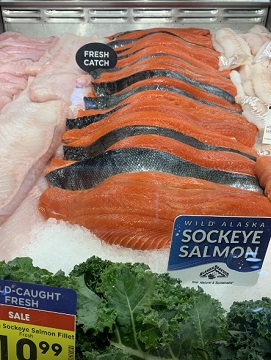
Statewide commercial salmon harvest tops 14M fish
Millions of wild salmon heading for their spawning grounds in Alaska are being greeted by commercial fishermen with drift gillnets and setnets, harvesting upwards of 14 million fish through Tuesday morning, including over four million in Prince William Sound. For the Copper River District itself over 601,000 salmon were delivered to processors and the state’s central region had an overall catch of over 11.6 million fish. Preliminary data compiled by the Alaska Department of Fish and Game put the catch through Tuesday at over 14 million fish harvested statewide, including 10.3 million sockeyes, 3.3 million chums, 331,000 pink, 46,000 Chinook, and 6,000 coho salmon. >click to read< 10:54
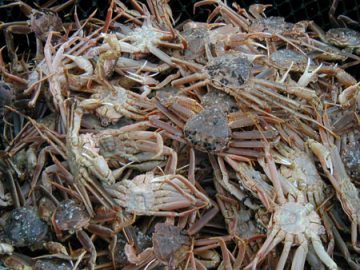
Disaster aid has arrived, but Western Alaska’s salmon and crab problems continue
The Alaska congressional delegation announced on Friday that the U.S. Commerce Department released the disaster aid. The money is to go to harvesters, processors and communities affected by designated disasters in salmon and crab fisheries that occurred between 2020 and 2022. For Bering Sea snow crab, signs are that the problems that led to the first-ever harvest closure, which was announced last October, will last for years. The National Oceanic and Atmospheric Administration Fisheries Service 2022 survey found that despite the emergence of cooler and more normal temperatures, mature male snow crab abundance was the lowest on record and mature female snow crab abundance was the third lowest on record. >click to read< 10:12
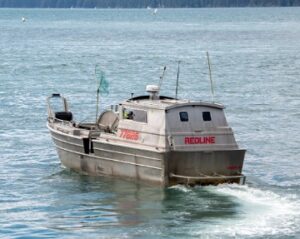
PWS harvest soars above 9M fish, statewide catch exceeds 16M salmon
Commercial harvesters in the Prince William Sound region delivered upwards of 371,340 salmon through Tuesday, June 28, while the statewide preliminary harvest exceeded 16 million fish, including deliveries in Bristol Bay, Cook Inlet, Kodiak and the Alaska Peninsula. Harvests reached almost 8% above year-to-date 2021 (2020 for pinks), led by strong sockeye harvests in the Alaska Peninsula and Bristol Bay regions, according to Sam Friedman, who is producing the McKinley Research Group weekly in-season reports on behalf of the Alaska Seafood Marketing Institute. For Prince William Sound, harvests and the weights of salmon harvested remained below the 10-year average, according to Alaska Department of Fish and Game biologist Jeremy Botz, in Cordova. >click to read< 09:06
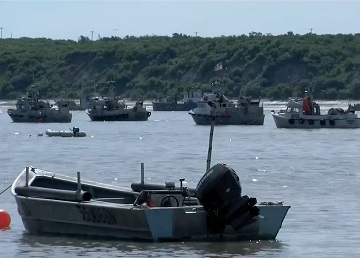
Nearly $132 million allocated for Alaska fishery disasters
The U.S. Commerce Department announced on Thursday that several Alaska fisheries are eligible to share in almost $132 million of federal disaster relief. The Yukon and Kuskokwim rivers are included after a chum and king salmon collapse last year. Impacted fishermen can share in $55 million, but that is also set to be split between fishermen from Southeast Alaska, Prince William Sound and Chignik. Gov. Mike Dunleavy submitted the disaster declaration to the federal government when applying for relief. >click to read< 10:53
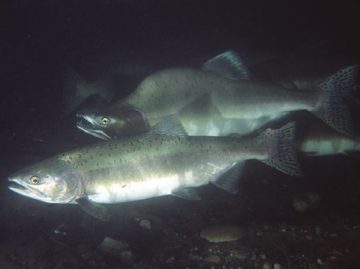
Wild pink salmon came in stronger than expected
Prince William Sound’s 2021 commercial salmon fishery proved challenging in the midst of a second year of the global novel coronavirus pandemic and increasing climate change, with harvesters delivering nearly 70 million salmon valued at an estimated $121.49 million. That added up to almost $72 million more than the value of last year’s commercial harvest of 25.5 million fish, according to preliminary state fisheries summaries. Humpy returns were the big surprise. Everyone came into the season a little bit skeptical because 2019 was such a poor year, but they perked up when they realized what they were seeing, Scannell said, of the odd year pink salmon run. >click to read< 09:58

Commercial Fisherman Timothy J. Moore of Homer, Alaska, has passed away
Timothy J. Moore, age 65, of Homer, Alaska, passed peacefully from this world into the loving arms of Jesus, the Great Fisher of Men on Dec. 2, 2021. After his family, Tim enjoyed hunting and sport fishing, but commercial fishing was his passion. his first fishing experience was set netting for salmon on his Uncle Pat McElroy’s sites as a skinny 13-year-old during a summer visit to Alaska in 1967. In 1991 the acquisition of the F/V Iliamna Bay allowed him to expand his herring fisheries to include Togiak and to participate in the halibut fishery during those crazy “derby” days before IFQs. The F/V Iliamna Bay was also the beginning of his Prince William Sound salmon seining career where he made many memories fishing with the family and some amazing crew. >click to read< 15:19
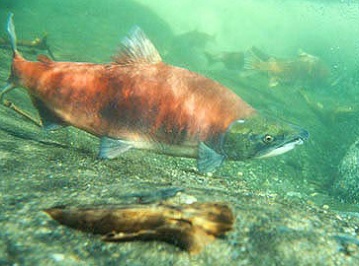
Boom-bust commercial salmon season doubles 2020 value
This summer was significantly better for commercial salmon fishermen in Alaska than 2020, though that success was far from evenly spread. Commercial salmon fishermen hauled in salmon valued at $643.9 million this season, according to the Alaska Department of Fish and Game. That’s more than double the 2020 value of $295.2 million, but still a little behind the estimated 2019 value of $657.6 million. Overall, 2021 ranks fairly well in the historical averages for numbers of salmon harvested and poundage as well as in value, according to Fish and Game data. >click to read< 16:37
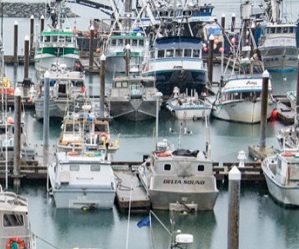
Prince William Sound harvests exceed 69M salmon
Late season harvesters were still pulling in coho salmon in in mid-September, with the preliminary Alaska Department of Fish and Game’s estimated harvest rising to 224,000 silvers, up from 199,000 a week ago. The Copper River district has been the biggest contributor to the coho catch to date, with 132,462 fish caught in drift gillnets, followed by 33,607 fish brought in Eastern Prince William Sound purse seiners and 16,436 fish from Prince William Sound Southwestern purse seiners, according to ADF&G updates. The average weight of Copper River,,, >click to read< 07:48
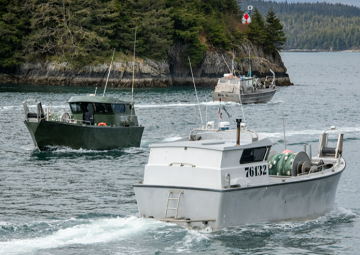
Prince William Sound harvest tops 67M salmon
Commercial harvesters wished they could have had more fishing time at the beginning of the season, but by the end of the season it certainly wasn’t a disaster, said Chelsea Haisman, executive director of Cordova District Fishermen United. “Overall, we are very happy with the way the seine season went,” she said. “Pink catches were very high. We are grateful and hoping for a strong finish with the cohos.” Still, the same amount of fish early on in the season holds much higher value, said Haisman, echoing the refrain of gillnetters who did not get openers for the famed Copper River sockeye salmon early on in the season when prices were higher. “Especially considering we exceeded the (Alaska Department of) Fish and Game in-river goal by over 100,000 fish,” she said. “We lost economic opportunity for the community.” >click to read< 18:14
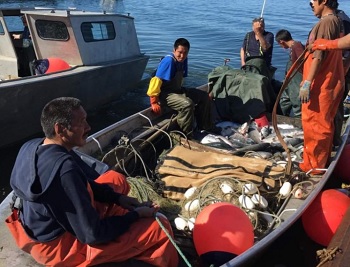
Kenai River sockeye over-escape by 1M, Kotzebue’s 2021 chum season to wrap up, Big PWS Humpy Harvest
Those numbers concern fishermen like Joe Dragseth, a drift-netter in Kenai. He said he worries about the health of the river. And, he said, it’s unfair commercial fishermen have been restricted while so many fish have made it up the river. “Basically, they’re taking the living away from us,” he said. >click to read< – Kotzebue’s 2021 chum salmon season to wrap up with another low catch – “It hasn’t been very good,” said Karen Gillis, manager of the Copper River Seafoods processing plant in Kotzebue. It’s one of two commercial chum salmon buyers in town this year. >click to read< – Prince 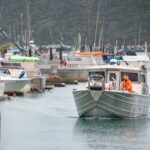 William Sound Humpy harvest is 3rd largest of decade – “The highlight of this season has been the wild stocks returning stronger than anticipated, given the uncertainty about spawning success from the 2019 parent year that was assumed to be negatively impacted by drought conditions,” said Heather Scannell, area management seine biologist in Cordova for the Alaska Department of Fish and Game. >click to read< 14:35
William Sound Humpy harvest is 3rd largest of decade – “The highlight of this season has been the wild stocks returning stronger than anticipated, given the uncertainty about spawning success from the 2019 parent year that was assumed to be negatively impacted by drought conditions,” said Heather Scannell, area management seine biologist in Cordova for the Alaska Department of Fish and Game. >click to read< 14:35
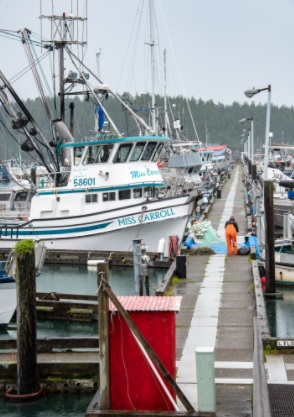
Humpy surge boosts Prince William Sound harvest to 54.3M
For Prince William Sound alone the Alaska Department of Fish and Game’s preliminary harvest report as of Wednesday, Aug. 18, stood at 50.4 million humpies, up from 31.9 million humpies just a week earlier, when the overall PWS commercial harvest totaled 39.8 million fish. Deliveries to PWS processors also reached a cumulative total of 2.6 million chums, 1.3 million sockeyes, 39,000 cohos and 7,000 Chinook salmon.,, In the PWS seine fisheries the egg take underway at the Valdez Fisheries Development Association was 38% complete as of Aug. 17. The Prince William Sound Aquaculture Corp. reported good run entry at Wally Noerenberg Hatchery and minimal run entry at the Armin F. Koernig and Cannery Creek hatcheries. Future fishing opportunities targeting PWSAC enhanced pink salmon would be contingent on run entry and broodstock acquisition, biologists said. >click to read< 11:22

Humpy harvest pushes Prince William Sound catch to 39.8M
Purse seine fishing for pink salmon continues in earnest in Prince William Sound, with the humpy catch alone through Wednesday, Aug. 11 reaching nearly 36 million fish and an overall commercial salmon harvest at 39.8 million fish. That’s up from 31.9 million pinks and an overall Prince William Sound harvest of 35.7 million fish as of a week earlier. Alaska Department of Fish and Game officials noted that the purse seine fishery in the eastern section of Prince William Sound alone had harvested over 21 million humpies, while in the northern section the humpy catch was 4.9 million fish. >click to read<08:49
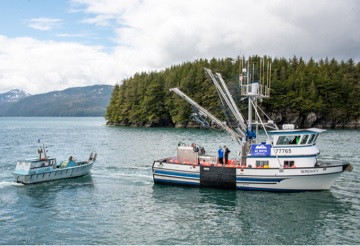
Prince William Sound catch jumps to 35.7M fish
Commercial harvests in Prince William Sound have reached over 35.7 million fish, including nearly 32 million pink salmon, up by over 5 million fish from a week earlier, according to the state’s latest preliminary commercial harvest reports. As of Wednesday, Aug. 4, that report showed harvesters delivering to processors in Prince William Sound 31.9 million pink salmon, 2.5 million chums, 1.3 million sockeye, 11,000 cohos and 7,000 Chinooks. The biggest overall contributor to the harvest to date is the Prince William Sound general seine fishery, >click to read< 09:12
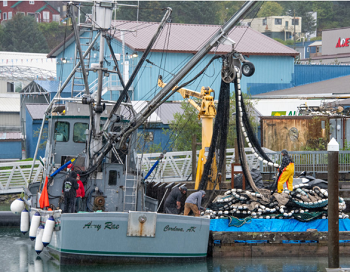
Prince William Sound coho, chum, sockeye harvests still rising
Even as the 2020 season is winding down, the catch of coho, chum and sockeye salmon is rising in Prince William Sound. Preliminary statewide harvest numbers compiled by the Alaska Department of Fish and Game showed that as of Wednesday, Sept. 2, the commercial catch for Prince William Sound had reached 24.3 million salmon, including some 21.3 pink, 1.9 million chum, 937,000 sockeye, 130,000 coho and 4,000 Chinook. The latest figures showed a boost of 95,000 humpies, 30,000 coho and 1,000 sockeyes since ADF&G’s Sept. 1 preliminary report. The Copper River District meanwhile was open for a 24-hour commercial fishing period on Thursday, Sept. 3. >click to read< 19:12
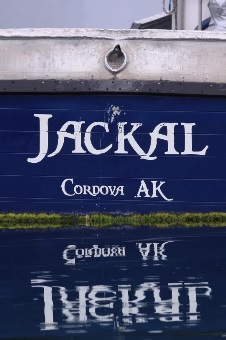
Around The World: Fishing For Cordova Salmon
Located on Prince William Sound in southeast Alaska and framed by the Chugach Mountain Range, Cordova, AK, was home to Eyak native peoples when named “Puerto Cordova” after a Spanish admiral by explorer Salvador Fidalgo in 1790. In 1886 the New England Fish Orca Cannery was built three miles north of present-day Cordova. It at one time processed most of Prince William Sound’s salmon harvest and employed hundreds of workers. It remained in operation until 1986.,, Priced at about $175,000 apiece, around 500 salmon fishing permits are issued every year in Cordova. They are divided into three categories: drift gillnets, set gillnets, and purse seines. photos, >click to read<, To view past articles and pictures, go to www.DaveGibsonImages.com. 14:17
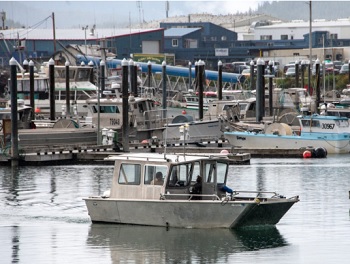
Prince William Sound harvest nears 19M salmon
Purse seine and drift gillnet harvests of salmon continue in earnest this week in Prince William Sound,,, The five year even year average for humpies through this date is 29 million fish. where the overall harvest has jumped from 11.2 million to 20.5 million salmon in a week, including some 17.6 million humpies. ADF&G’s Charlie Russell in Cordova said wild stocks of pinks this year have performed above average and will likely total some 6 million to 7 million fish, while hatcheries are likely this year to get about 50 percent of their forecast. PWS harvests of sockeye salmon rose from 902,000 a week ago to 924,000 on Aug. 12, while overall harvest totals for Chinook chum and coho salmon showed no significant growth. >click to read< 11:07

Alaska and B.C.’s salmon runs expected to be worst ever recorded
Salmon returns on the west coast look bleak this year. Alaska’s salmon returns have been so poor that some communities already are claiming fishery disasters. The socket salmon run on B.C.’s Fraser River is expected to be the worst ever recorded,, in Alaska, the Cordova City Council passed a resolution last week, asking the state to declare disasters for both the 2018 Copper River sockeye and chinook salmon runs and the 2020 sockeye, chum and chinook runs at the Copper River and Prince William Sound,, The Pacific Salmon Commission (PSC) says this year may turn out to be the worst for sockeye salmon in the Fraser River since tracking began in 1893, >click to read< 12:56
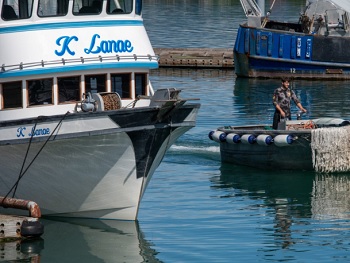
Humpy harvest in PWS surges to exceed 12M fish
Harvests of over 9 million pink salmon over the past week have pushed Alaska’s yearly total to over 25 million fish, including upwards of 12 million humpies caught in Prince William Sound. Alaska Department of Fish and Game finfish area management biologists in Cordova said the cumulative pink salmon harvest in the Sound through Aug. 1 alone was estimated at 10.5 million common property fish and 1.5 cost recovery fish. Preliminary commercial salmon harvest data compiled by ADF&G through Tuesday, Aug. 4, put the total commercial salmon harvest in Prince William Sound at 11.2 million fish, including 12.3 million pink, 1.9 million chum, 902,000 sockeye, 4,000 coho and 4,000 king salmon. >click to read< 19:03


































